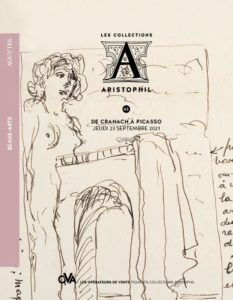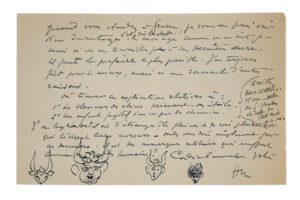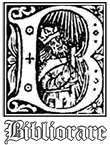MATISSE HENRI (1869-1954). — L.A.S. «Henri» avec 4 DESSINS à la plume, 18 août 1943, [à Henry de MONTHERLANT] ; 2 pages oblong in-8. — À propos de Pasiphaé. Chant de Minos de Montherlant, avec gravures de Matisse (Fabiani, 1944).
Description
1° Les blessures des chiens deviennent des étoiles. (Il existe deux constellations celle du G. Chien et celle du Petit Chien, je le sais.)
2° Un enfant fugitif s'en va par les chemins.
3° Au large de la nuit il est d'étranges îles pleines de rois pleurants qui lèchent leurs morsures. Voulez-vous dire simplement pour ces derniers : il est des monarques solitaires qui souffrent comme de simples humains ?»...
♦Suivent 4 petits dessins représentant des têtes cornues, dont un amusant autoportrait.
L.A.S. "Henri" with 4 pen-and-ink DRAWINGS, 18 August 1943, [to Henry de MONTHERLANT] ; 2 oblong pages in-8. — À propos de Pasiphaé. Chant de Minos by Montherlant, with engravings by Matisse (Fabiani, 1944). — Montherlant will see the whole of their book as soon as the printer has composed the layout with the final elements that are on their way to Paris, and Matisse draws his attention to the choice of a title for the introduction, and the placement of the notes. "I hope my big job (think I have done nothing else since you were in Nice - and that I have been thinking about it constantly. I am trying at the moment to get away from it) will interest you. But you won't have seen all of this work. When you come to Grasse, I'll show you much more. That is to say, the studies. At my age, as one never knows if one is not working on one's last work, one must perfect it as much as possible. I have always done my best, but for other reasons. He asks where to find the "explanations for :
1° The wounds of dogs become stars. (There are two constellations, that of the G. Chien and that of the Petit Chien, I know.)
2° A fugitive child goes away by the wayside.
3° There are strange islands in the night full of weeping kings who lick their bites. Do you want to say simply for the latter : there are solitary monarchs who suffer like simple humans? Four small drawings of horned heads follow, including an amusing self-portrait.




